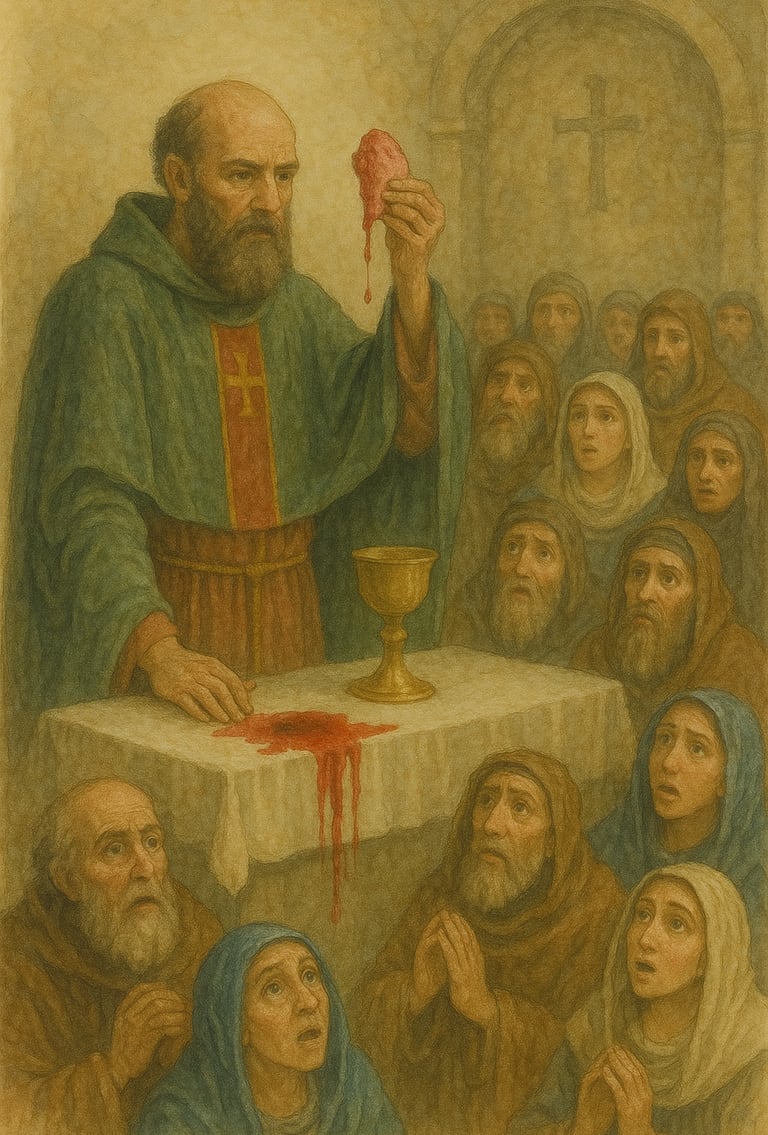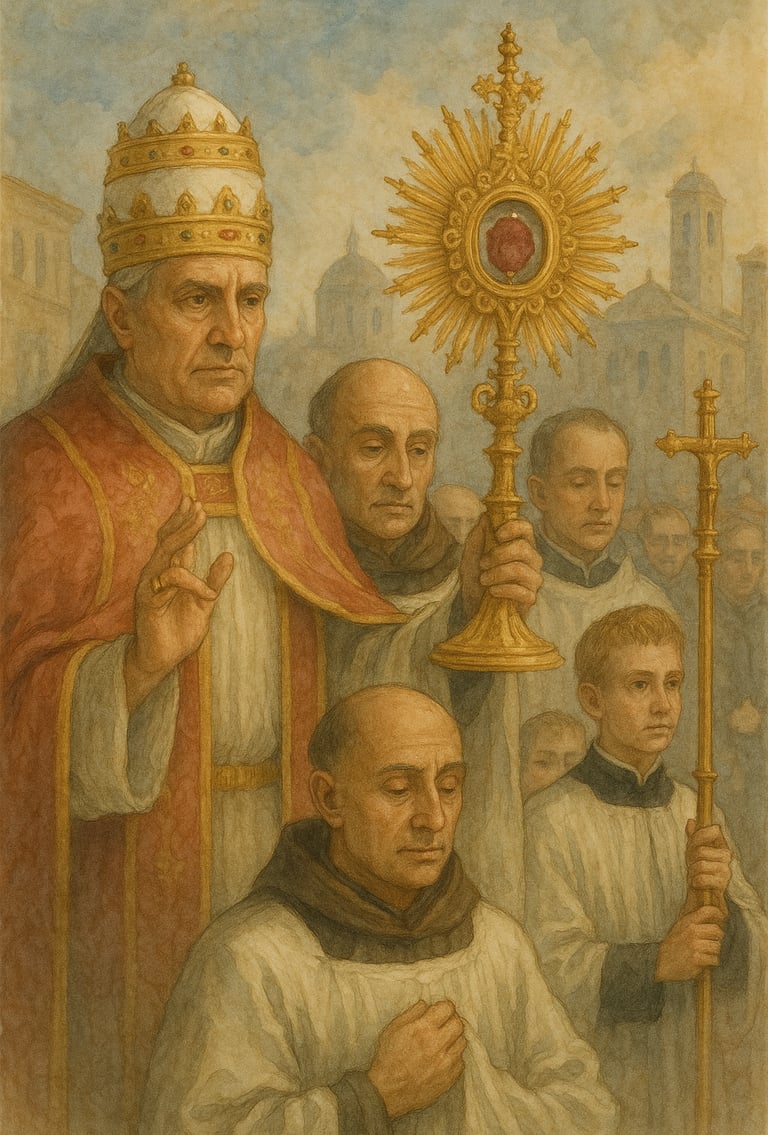Top 7 Eucharistic Miracles
Church-Approved Signs of the Real Presence
Halo & Light Studios
6/21/20253 min read


Click link for a video of this content at: https://youtu.be/4vsBRkTkyZA
In honor of the Feast of Corpus Christi, here are the Top 7 famous, awe-inspiring Eucharistic approved by the Catholic Church—spanning over 1,200 years of faith, mystery, and scientific wonder. Each is a powerful testimony to the Real Presence of Jesus Christ in the Blessed Sacrament.
The origins of the feast go back to the 13th century, though belief in the Real Presence dates to the earliest days of the Church. St. Juliana of Liège, a Norbertine canoness in Belgium, had mystical visions in which she saw the moon shining brightly but with a dark spot—symbolizing a missing feast in the Church’s liturgical calendar specifically honoring the Eucharist. Encouraged by her spiritual director and local clergy, she promoted the idea until it reached Pope Urban IV.
In 1264, Pope Urban IV formally instituted the feast for the universal Church through the papal bull Transiturus de hoc mundo, making Corpus Christi the first feast established universally by papal authority rather than by local devotion. Corpus Christi is Latin for the “Body of Christ.” It is a solemn celebration in the Latin Church that honors the Real Presence of Jesus Christ in the Holy Eucharist—Body, Blood, Soul, and Divinity. The pope commissioned none other than St. Thomas Aquinas to compose the liturgical texts and hymns for the feast. His masterpieces include: Pange Lingua (which contains the beloved Tantum Ergo), Adoro Te Devote, Lauda Sion, and O Salutaris Hostia—all of which reflect deep theological clarity and Eucharistic devotion.
And without further ado, here are the Top 7 Eucharistic miracles approved by the Catholic Church:
Lanciano, Italy (8th Century)
🔹 Historical Context: A Basilian monk, doubting the Real Presence, witnessed the Host turn into flesh and the wine into blood during Mass.
🔬 Findings: Scientific testing confirmed the flesh is human cardiac tissue and the blood type is AB—the same found on the Shroud of Turin.
✅ Status: Church-approved and preserved for veneration.Bolsena-Orvieto, Italy (1263)
🔹 Historical Context: A German priest doubting the Eucharist witnessed a bleeding Host during Mass.
🔬 Findings: The corporal (altar cloth) was stained with blood.
🏛️ Impact: Inspired Pope Urban IV to institute the Feast of Corpus Christi.
✅ Status: Relic preserved in Orvieto Cathedral.Santarém, Portugal (1247)
🔹 Historical Context: A woman stole a Host for sorcery; it began to bleed and emit light.
🔬 Findings: The Host remains incorrupt and has occasionally glowed over centuries.
✅ Status: Approved and venerated in the Church of St. Stephen.Siena, Italy (1730)
🔹 Historical Context: Thieves stole consecrated Hosts, later found discarded.
🔬 Findings: Over 280 Hosts remain perfectly intact nearly 300 years later, with no preservatives.
✅ Status: Investigated multiple times, approved for veneration.Buenos Aires, Argentina (1996)
🔹 Historical Context: A Host placed in water to dissolve transformed into bloody flesh.
🔬 Findings: Identified as living human heart tissue under stress, type AB. Confirmed during Cardinal Jorge Bergoglio’s tenure—now Pope Francis.
✅ Status: Approved locally, widely regarded internationally.Tixtla, Mexico (2006)
🔹 Historical Context: A bleeding Host appeared during a retreat with religious sisters.
🔬 Findings: Cardiac muscle and AB blood, consistent with previous miracles.
✅ Status: Church investigation confirmed authenticity.Legnica, Poland (2013)
🔹 Historical Context: A fallen Host placed in water developed red tissue.
🔬 Findings: Identified as heart tissue showing signs of agony. Blood type AB.
✅ Status: Approved for public veneration in 2016.
Each of these signs affirms the Catholic doctrine of transubstantiation—that the bread and wine truly become the Body and Blood of Christ. Through ancient and modern miracles alike, God continues to reveal His Real Presence in the Eucharist at every Holy Mass.
Blessed Carlo Acutis (who will be canonized by Pope Leo XIV in a few days as of writing this) created an epic virtual museum for Eucharistic miracles: https://www.miracolieucaristici.org/en/liste/list.html Check it out!


